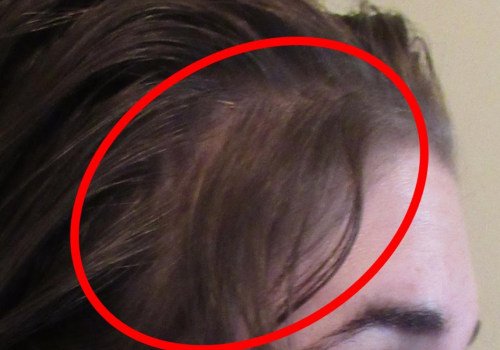Hair loss can be permanent or temporary. It is impossible to count the amount of hair lost on any given day. You may lose more hair than usual if you notice a large amount of hair in the drain after washing your hair or strands of hair on the brush. You may also notice thinning hair patches or baldness.
See your doctor if you are distressed by persistent hair loss in you or your child and want to continue treatment. For women who are experiencing receding hairline (fibrosing frontal alopecia), talk to your doctor about early treatment to avoid significant permanent baldness. Technically, permanent hair loss, equivalent to a cancellation, occurs once the follicles are scarred or become dormant. This can happen through prolonged self-inflicted damage, such as using cuckolds constantly, through an accident such as a burn or cosmetic procedure gone wrong, or simply by doing nothing to prevent genetically susceptible follicles from dying.
According to Emmanuel, “permanent hair loss occurs when there is scarring alopecia on the scalp. When there are scars, hair loss is permanent because scar tissue on the scalp skin blocks the opening of the follicle. Scar alopecia can be caused by autoimmune problems, in which a group of white blood cells attack other cells in the hair follicle and cause scarring. Other problems that cause scarring alopecia include the use of tight or heavy pigtails, braids and extensions, burns, blunt head trauma, scalp surgery, and untreated scalp infections.
Treatment helps many people who have hair loss, but not all. A dermatologist can tell you what to expect. Is it possible that it will grow back? You can change the way you care for your hair, which can prevent hair loss. Once a hair follicle is damaged, hair cannot grow from that follicle.
Having many damaged hair follicles creates permanent bald spots. Androgenetic alopecia is the most common type of hair loss, affecting more than 50 million men and 30 million women in the United States. Commonly known as male-pattern hair loss or female-pattern hair loss, androgenetic alopecia is inherited but can be controlled with medication or surgery. Androgenetic alopecia, which is more commonly known as male pattern baldness and female pattern baldness, is the most common type of hair loss and affects about 30 million women and 50 million men in the United States.
Currently, few treatment options are available to stop or reverse miniaturization. Most hair loss treatments only control hair loss, rather than being a solution. When hair loss is triggered by predisposed genetic causes, follicles are also affected and miniaturized. This condition cannot be overcome without extensive hair treatment and this is called permanent hair loss.
Cosmetic surgical procedures are also becoming more popular and effective for hair growth replacement. Alopecia areata It develops in otherwise healthy people, this disease that can cause round patches of baldness on the scalp, diffuse hair loss or, in rare cases, complete hair loss. Some hairstyles, including ponytails and tight braids, separate the hair from the scalp with such force that the strands of hair are damaged and fall out. This form of alopecia occurs in an individual based on scalp interactions such as braiding, weaving or high tension combing that cause excessive pulling and causing hair breakage and scalp scarring.
Hair loss affects millions of men and women, but despite decades of research, no cure is yet available. But even if you suffer from temporary hair loss, you should consult a hair expert and seek treatment for hair loss. The AAD's Coronavirus Resource Center will help you find information on how you can continue to care for your skin, hair and nails. Chemical treatments can cause thinning of the hair through breakage and, after prolonged periods, braiding and ponytails can pull hair out at the root, leaving patches of baldness.
The American Hair Loss Association says that most experts agree that minoxidil is “a relatively marginal drug effective in the fight against hair loss. If you think a medicine is causing your hair loss, ask the doctor who prescribed it if hair loss is a possible side effect. Researchers at the University of Texas (UT) Southwest Medical Center in Dallas have identified a protein called KROX20, which activates skin cells and tells them to turn into hair. Send an instant online consultation so that one of Belgravia's hair loss specialists can diagnose your condition and recommend effective treatment, wherever you live.
Existing drugs for treating hair loss have limited effectiveness and require continuous use for treatment benefits to continue. . .





